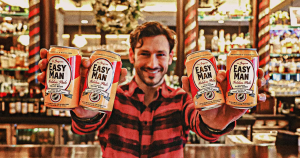After delving into the intricacies of regulatory compliance and market entry strategies, it’s crucial to focus on a frequently underestimated aspect of expanding your non-alcoholic beverage brand into the U.S.: understanding and managing costs and cash flow.
Due to her expertise on these topics and more, I asked Jane McKay of Astute Ideas to partner with me in writing this article, the third in Dry Atlas’ series on importing. Together, Jane and I hope to shed light on the often overlooked financial challenges and strategic planning necessary for a successful market entry.
The Allure of the U.S. Market: A Reality Check
Many beverage brands view the U.S. market as a land of opportunity, envisioning significant profits without fully understanding the financial commitments required. A strategic plan is more than a pathway to success; it’s a shield against the financial risks of international expansion. Jumping in without a clear financial strategy can lead to setbacks and common pitfalls.
Case Study: Cautionary Tales
- Brand A’s Balking: Despite having the funds, one brand halted their U.S. expansion due to the unexpected up-front compliance costs of $5,000 to $10,000. It’s important to be aware and financially prepared for all entry costs.
- Brand B’s DIY Approach: Another brand attempted to handle everything in-house, basing their U.S. strategy on assumptions rather than solid market data. They then faced the consequences of inadequate funding and a lack of market research.
The Unknown Unknowns: Financial Blind Spots
Many brands, including those led by seasoned entrepreneurs, fall into the trap of not knowing what they don’t know. The right expert will guide you through understanding the financial landscape, from distribution costs to shipping expenses across the vast U.S. territory. Learn from others’ past mistakes and know the importance of consulting with financial and industry experts.
Cash Flow Is King: The Strategic Importance of Liquidity
Launching on a shoestring budget isn’t just risky; it can be a recipe for failure in a market where cash flow reigns supreme. A good importing consultant will emphasize the need for a strategic, narrow focus, ensuring you have the funds for production cycles and supporting consignments upfront. Broad, nationwide launches require vast capital resources, so most young non-alc brands with limited resources are well served to be as surgical as possible.
Navigating Route to Market (RTM) Complexities and Costs
Understanding the route-to-market, or RTM, is crucial and grasping its associated costs is vital. One must understand the financial aspects of distribution, including the typical 60-day wait for payment and the complexities of billbacks. In addition, consider that having a salesperson on the ground and specialized services like a bookkeeper and billback specialist can make a significant difference.
Marketing: Investing in Visibility and Engagement
Marketing in the U.S. isn’t just about making noise; it’s about strategic engagement and visibility. And with a limited budget, marketing dollars must be allocated to the highest ROI activities. From the costs of trade shows to digital strategies, you’ll want a comprehensive view of the various marketing expenses and how to budget for them effectively.
Brands with a more robust financial position can potentially take advantage of partners in market to establish a solid foundation with a local brand strategy, layered with a tactical marketing plan.
On the digital front, engagement and analysis using a trusted digital marketing agency with access to syndicated data, including the likes of IRI, NIQ, and SPINS, puts brands in a strong position early.
Education in market, another sometimes overlooked component of a robust marketing strategy, can be key to a brand’s success, and this is often the most expensive marketing component of all.
Case Study: Success Story
- A new aperitif brand from Dubai recently performed a low cost market test in New York City at Spirited Away, my retail store. Our Showcase program allowed them to simultaneously build early market demand and discover insights about how their product would be received in the US. Now, they’re being distributed throughout the country. Learn more.
Conclusion
Many brands make the mistake of thinking that passion for non-alc and a delicious liquid will beget success. Unfortunately for them, the adult non-alc market is more crowded than ever and even outstanding beverages go unnoticed.
Entering the U.S. market is an exciting opportunity but it requires more than enthusiasm and a quality product. It demands a deep understanding of the financial commitments and strategic planning necessary to thrive. By addressing the costs and cash flow challenges head-on with a well-informed, strategic approach, your brand can navigate the complex U.S. landscape more effectively and set the stage for success.
The reverse is also true, i.e. when a U.S brand considers taking a leap across the pond to the U.K.
When you’re ready, learn more about Jane and her expertise offerings.
For more from Douglas, follow him on LinkedIn.
Dry Atlas is a media company focused on alcohol alternatives. We deliver non-alc insights, news, and recs to over five million people annually. To stay up to date on all things non-alc, subscribe to our weekly newsletter and view our offerings for brands.






